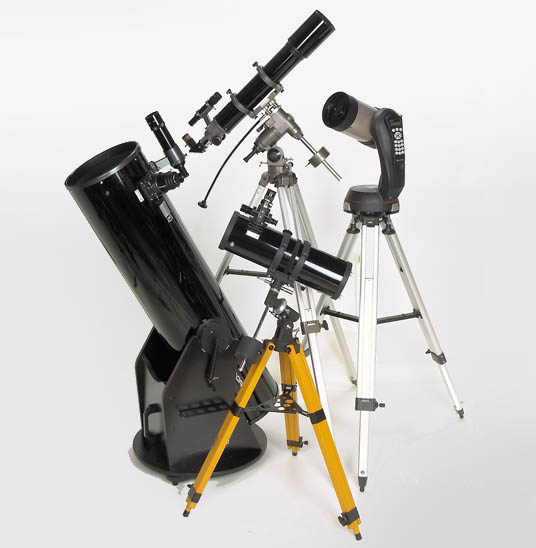When you're out observing, you might reach out for that high-power lens to clarify features inaccessible from low-power eyepieces. But what do different eyepieces and accessories actually do for your telescope's performance? Find out using this telescope calculator.

To use this calculator properly, you'll need to know a few basic details about your telescope and eyepieces. Most of these numbers can be found on your eyepiece barrel, on your telescope's tube or mount, or in the equipment's instruction manual. Failing that, you can always visit the website of your telescope or eyepiece manufacturer.
Telescope Calculator Inputs:
- Scope Aperture: The diameter of a telescope’s main lens or mirror — and the scope’s most important attribute.
- Scope Focal Ratio (f/number): A lens or mirror’s focal length divided by its aperture. For instance, a telescope with an 80-mm-wide lens and a 400-mm focal length has a focal ratio of f/5.
- Eyepiece Focal Length: Eyepiece focal lengths are nearly always printed on the eyepiece itself and are labeled in millimeters. A telescope’s magnification can be changed by using eyepieces with different focal lengths; shorter focal lengths yield higher magnifications.
- Eyepiece Apparent Field: For most eyepieces (Kellners, Orthoscopics, or Plössls), this value is about 50 degrees. For specialty oculars, check the barrel of the eyepiece first.
- Barlow Lens: A lens that's placed into the focusing tube to effectively increase a telescope's focal length and, in turn, the magnification of any eyepiece used with it.
- Focal Reducer: A device that shrinks the effective focal length of the telescope.
Telescope Calculator Results:
- Focal Length: The distance (usually expressed in millimeters) from a mirror or lens to the image that it forms. In most telescopes the focal length is roughly equal to the length of the tube. Some telescopes use extra lenses and/or mirrors to create a long effective focal length in a short tube.
- Magnification (power): The amount that a telescope enlarges its subject. It’s equal to the telescope’s focal length divided by the eyepiece’s focal length. As a rule of thumb, a telescope’s maximum useful magnification is 50 times its aperture in inches (or twice its aperture in millimeters).
- True Field of View: The circle of sky that you see when you look through a telescope or binoculars. Generally, the lower the magnification, the wider the field of view.
- Exit Pupil: The size of the circle of light that hits your eye when you look through the eyepiece. If the exit pupil is larger than 7mm, it means your eye probably won't see all the light coming from the eyepiece. (That's because, for an average adult, the pupil of the dark-adapted human eye is only 7 mm wide.) So in that case you should switch to a higher magnification.
- Theoretical Resolving Power: The angular size of the smallest detail you can see at high magnification. This tells you the closest double star you can expect to separate.
- Approximate Limiting Magnitude of Telescope: A number denoting the faintest star you can expect to see. The higher the magnitude, the fainter the star. For example, a 1st-magnitude star is 100 times brighter than a 6th-magnitude star.
If you see any problems with this telescope calculator tool, or any of our interactive tools, please send an email to [email protected].
 0
0
Comments
You must be logged in to post a comment.